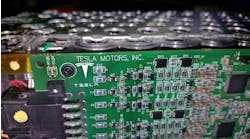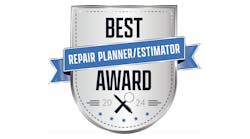People look at touch time in several different ways. For me, I look at it as a guide to determine the overall performance of your shop. Touch time is actually the heartbeat of a shop, and how well it is ticking tells me the effectiveness of several management processes. It amazes me that the touch time national average hovers between 2.3 and 2.8 hours per day. What amazes me even more is that third-party metrics hold shops accountable for 4.5 hours per day. That is an average difference of almost 2 hours per day.
Before I go much further, let me explain what touch time is. Touch time is the average number of labor hours produced each day the vehicle is in your possession. The easiest calculation is dividing the billable hours on a repair by the number of days it took to repair the vehicle. Some only measure the workdays while others calculate the calendar days the vehicle was in your possession. The truest measurement should include weekends and holidays.
Scheduling is an area where touch time often causes problems. If you are producing 2.5 labor hours per day but scheduling according to the third-party metrics of 4.5, it will not take long for your shop to be overwhelmed. If you target a schedule that utilizes an average 20-hour repair with a 4.5-hour touch time, you would have the repair completed in four and a half days. However, if you are producing at a 2.5 touch time, it would take you eight days—almost twice as long. As your week progresses, your work in process (WIP) will increase because of the difference in performance versus scheduling, meaning some vehicles are not getting touched.
Ever have a time when one body technician sends three vehicles at once to the paint shop? Touch time is the culprit. One of the causes of low touch time is not being able to work on a vehicle from start to finish without stopping. When a technician must stop on a vehicle, he asks for another one. Since you are scheduling for a higher touch time than you are performing, you have untouched repairs to add to the workflow. This allows a technician the opportunity to have multiple vehicles ready for refinishing while backlogging the paint shop.
I had a shop owner once tell me he could not understand why he struggled to meet payroll when he had so much work. He had most recently bragged at a meeting that his technicians were 180% productive, which meant in an eight-hour day his technicians were turning 14.4 hours. That's not a bad statistic with the industry average landing between 170% and 200%. The problem was they were not being 180% productive on the same vehicle. When we reviewed his payroll, some technicians were working on 12–18 repairs in a payroll week and not posting more than four hours per repair. Because repairs were taking up to eight days to complete, he was most often paying for their labor prior to the vehicles being delivered.
Another issue surrounding cash flow and touch time is in parts. Just like the issue with labor, it is often that shops with low touch time are paying for parts when repairs have not even started. When a repair comes in with the anticipation that it will be completed in four to five days and ends up taking eight, some parts are just waiting with the vehicle while costs are incurred.
I have talked about a couple of key areas that are affected by low touch time, but what can be done to improve? The most effective way to increase touch time is to completely disassemble the damaged areas of the vehicle and blueprint the repair process. By blueprinting the repair process, you identify all labor requirements, discover all parts needed and validate the refinishing processes necessary to complete the repair. The repair is then held until all the parts needed are received before being put into production. This allows the technician to put the 180% productivity into one vehicle and maximizing touch time capability.
Another area is damage appraisal documentation—recording every operation required to complete the repair. My favorite items to check when I visit a shop are damage appraisals on vehicles waiting for paint. I review each damage appraisal and compare it to the work actually completed, where most often I will find repair steps performed that were not itemized. If your technicians are performing repair steps without itemizing them, they are not only working for free but also affecting touch time, as the time spent is not accounted for in the calculation.
As I mentioned earlier, touch time is the heartbeat of a shop. If you have a problem in your shop and you are not sure of the cause, take a look at your touch time. Trust me, it might not be the root cause of your specific problem, but as you break the issue down it will be affected. As you start isolating the items that cause low touch time, you will find the resolution to your problem. I am willing to bet it all began with not completely disassembling a vehicle, developing a repair blueprint, and accurately documenting the repair processes. If you take the extra time to analyze each of these issues, you will get that extra time back in the future (and then some) once you are able to move cars through the door faster while allowing technicians to work more efficiently.


